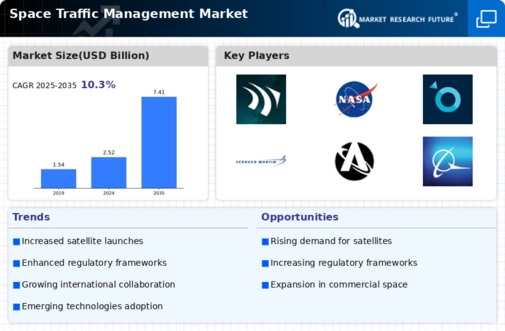The Space Traffic Management Market is rapidly evolving as the need for effective and sustainable management of increasing satellite traffic intensifies. With the rise in the number of satellites launched and their growing significance in commercial, governmental, and scientific endeavors, the competitive landscape is characterized by a mix of established players and emerging startups.
Companies in this sector are working to develop and implement innovative solutions that enhance space situational awareness, collision avoidance, and regulatory compliance. This market is influenced by various factors, such as advancements in technology, collaborations between governments and private entities, and the pressing need for international standards in managing space activities.
As the space sector continues to grow, understanding competitive dynamics becomes crucial for stakeholders aiming to capitalize on opportunities within this space.
Ball Aerospace has carved a significant niche in the Space Traffic Management Market through its emphasis on cutting-edge technology and engineering capabilities.
The company's strong track record in satellite construction and ground systems equips it with the expertise needed for effective data analytics and space situational awareness. Ball Aerospace leverages its extensive experience in complex aerospace systems to deliver solutions that foster better coordination among space operators.
By focusing on the integration of innovative technologies, Ball Aerospace is positioned to enhance the safety and sustainability of space operations. The strength of its research and development efforts also fosters collaboration with environmental agencies, making it a prominent player in the space traffic management landscape.
Its commitment to providing reliable, robust, and adaptable solutions sets it apart as a trusted contributor to the evolving challenges of space traffic.
Inmarsat plays an influential role in the Space Traffic Management Market, particularly through its robust satellite communications capabilities. The company has a well-established network that supports a wide range of applications, enabling precise tracking and monitoring conducive to effective space traffic management.
With its reach and reliable connectivity, Inmarsat is well-equipped to assist operators in analyzing and interpreting data related to satellite positioning and movement. The firm's investment in advanced technologies enhances its offerings, allowing space operators to access real-time information crucial for maintaining the safety and integrity of space activities.
Inmarsat's strategic partnerships and collaboration with industry stakeholders also contribute to its growth within this market, as it not only provides vital services but also engages actively in developing regulatory frameworks and best practices essential for the ongoing stability of the space environment.





















